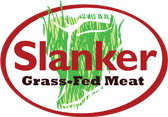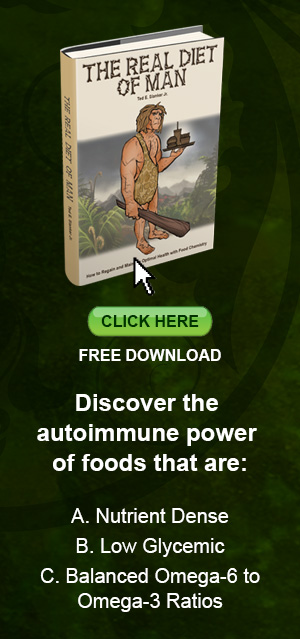Don’t be a Food Patsy

Inadvertently most of us become food patsies at one time or another. So how do we avoid being taken in?
For example, during the next two weeks hundreds of thousands of paleo advocates and many upscale shoppers will be conned by slick turkey peddlers. Meaningless fancy labels like good nutrition, humane treatment of animals, heritage, heirloom, better flavor, locally-produced, fresh, and a firmer texture will trap consumers. When that happens they will pay higher prices motivated by perceptions that do not match reality. That’s what being conned is all about. This also means those gullible consumers could have purchased a much lower priced, loss leader turkey at Save-a-Lot and gotten the same quality of turkey.
This news release explains how to avoid a trap that will cost impressionable turkey shoppers literally millions of dollars this month.
Being deceived can happen even when our best of intentions is to follow The Real Diet of Man. That’s because the food-patsy trap is ubiquitous in the food business and health food stores are notorious for their deceptive labeling practices.
There are two basic ways to shop. One either chooses foods to enhance health or one chooses foods based on price, convenience, and tradition. One of the best grocery chains around for price, convenience, and traditional flavors is Sav-a-Lot food stores. Even without their coupons and weekly sales its everyday low prices will blow your mind. Its grain-fed meats make Wal Mart’s meats look expensive. Unfortunately the nutritional qualities of Save-a-Lot offerings (which are similar to the majority of Whole Foods offerings) are as low as their prices.
We know that shopping for price, convenience, flavor, and tradition leads directly to processed grains, whole grains, potatoes, cereals, breads, beans, lots of fruit, nuts, grain-fed meats, dairy, and poultry products, processed foods, and such. Most of these foods have horrible Omega-3 fatty acid profiles that cause autoimmune diseases, brain disorders, and many other chronic diseases that cost our nation trillions of dollars every year. These foods are also high glycemic which means they are like addictive sugar shots. Most of them are at the very best low-nutrient foods and at their worst some are actually anti-nutrient.
Some of the tricky words that trap so many of the more sophisticated consumers into eating unhealthy foods are fat free, lean, sugar free, no sugar added, zero trans fats, immunity boosters, natural, organic, multigrain, whole grain, gluten free, vegetable fed, free range, Omega-3, hormone free, antibiotic free, local, humanitarian raised, heritage, brown egg, heirloom, low salt, light, cholesterol free, heart healthy, Paleo, and more. These words are marketing mumbo jumbo that really fancy stores love to lay on folks. The fancy stores with their earthy, naturally healthy-appearing ambiance charge higher prices to attract “sophisticated” upscale shoppers who gladly pay more thinking they are actually getting something better.
When it comes to lean, fat free, and cholesterol these products are being promoted with old advice that was based on myths rather than solid science. Our bodies need fat! Our brains are mostly fat. Our cells and nervous systems require fat to function. Our bodies make cholesterol and it is a healing fat. Avoiding fat does not stop obesity nor improve heart health. Eating fat is not a problem. The problem is in eating foods that do not provide the proper BALANCE of ESSENTIAL fatty acids. That critically needed information is not on nutrition labels. It is critical information.
Many sugar-free or no-sugar-added products are actually high glycemic. Even fruit can be high glycemic. One needs to know the chemistry of the ingredients in order to determine its “sugar” impact. Fancy honey and expensive maple syrup are still huge “sugar shots” and sugar is one of the most destructive chemicals you can put in your body. Even dried fruit and fruit juices are big sugar shots. Do we even need to discuss high-fructose corn syrup?
When it comes to meats, fancy stores offer prime instead of select. That means more intramuscular fat – but when from a grain-fed animal, it is more of the wrong balance of fats. The meat may be more tender, but its nutritional characteristics are slightly lower than lower-priced select grade grain-fed meats and far, far lower than grass-fed meats.
In the fruit and vegetable sections fancy stores usually offer only the highest grade produce. But other than looking flawless and beautiful, the basic nutritional characteristics of flawless produce is identical to lower grade produce. Quite often we shop the local fruit stands that have the lower grade produce selling at significant discounts. The produce is not as pretty, but its basic fundamental chemistry is the same as the higher grade, flawless looking produce.
In the grain department, no matter how you slice it and fancy it up, grain is grain. There is no way to improve the high glycemic, high omega-6, low Omega-3, low nutrient characteristics, and addictive qualities that are native to grain. The fanciest milled whole grains are simply milled grain. And did you know that eating two slices of whole-grain bread can spike the blood glycemic level even more than eating a candy bar?
So, if we are to be smart shoppers for foods that prevent and even stop chronic disease, we must analyze our foods with the basic chemistry of the foods in mind. We must get the facts behind our foods and learn how buzz words are used against us. We must educate ourselves because the medical community, the media, the food marketers themselves, and the common knowledge of the masses either ignores nutritional science or falls for all the buzz words like moths being attracted to a flame.
Compounding the problem even more is that the sweet foods, which includes the grains, are addictive. Also, what has now become our nation’s traditional foods are all the improper foods. Couple those issues with ignorance and a general attitude to scoff at nutritional science and you’ve got the perfect storm for disease. No wonder 18% of our gross domestic product is spent on healthcare. In fact, the U.S. Department of Housing and Urban Development reports that in the survival budget of families just above the poverty level monthly expenses for healthcare are 31.6% higher than expenses for food.
Our nation is a nation of sick people who think sickness is normal. As such, our nation is a nation of food patsies. But don’t look to others to make your decisions for you. You have a choice every time you eat and the most important choice before eating may have been to avoid the food-patsy trap.
Ted Slanker
November 14, 2014




